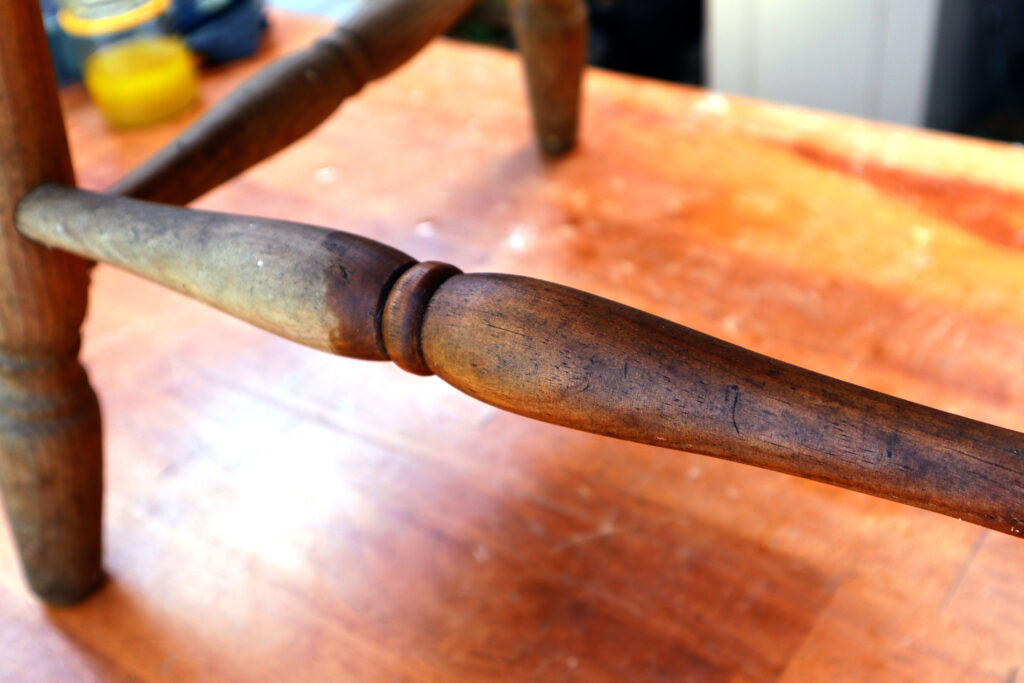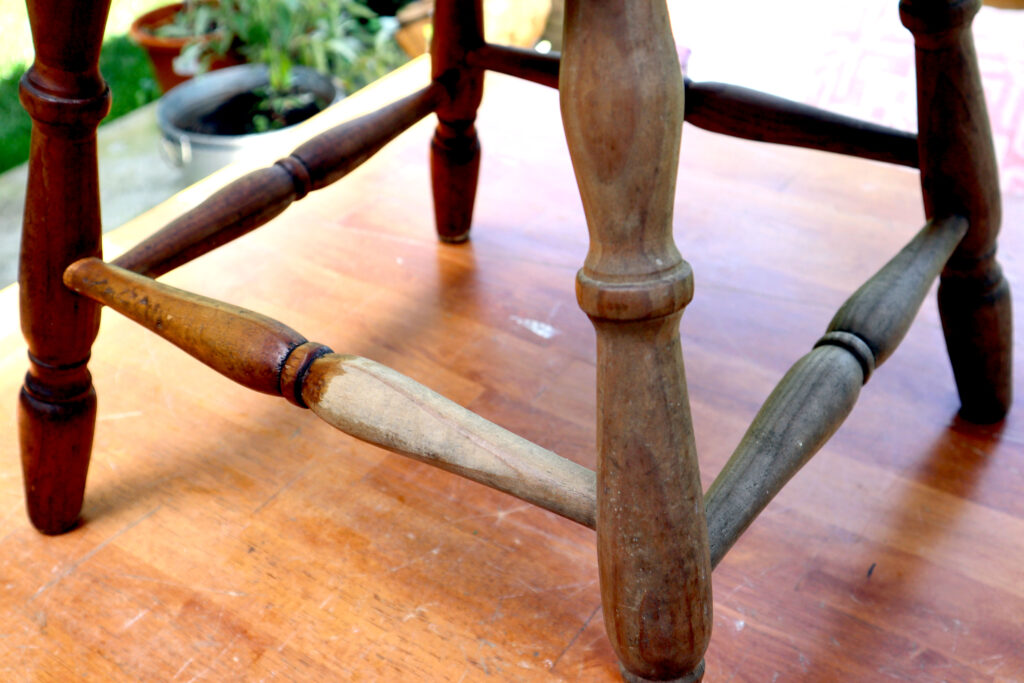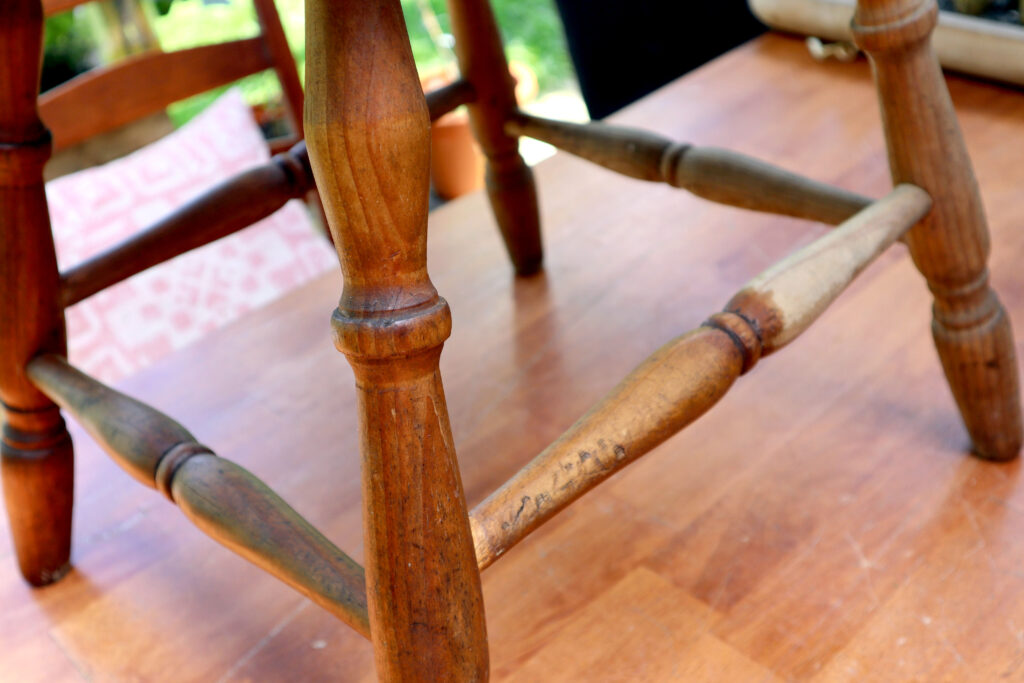DIY eco friendly Wood Polish recipe

I love this two ingredient eco friendly wood polish! It couldn’t be simpler to make and use. It contains no harsh chemicals or allergens. It’s gentle enough to use with bare hands, and it could even be used as a basic salad dressing, that’s how safe it is! It keeps forever and it can magically bring old, damaged furniture back from the dead.
It’s called a wood polish, but to be honest, it doesn’t really require any actual polishing, you just wipe it on, then wipe off any excess. It really couldn’t be easier to use, although it can get a little messy. I always take pieces of furniture outside before polishing, so I can make sure they get a really good coating, without having to worry about making a mess.
If you do spill some, it’s really easy to clean, just wipe up the spill with a clean dry cloth, then wipe down the surface with a general purpose eco cleaner.
The vinegar cleans off any surface dirt, dust or grime, while the olive oil rehydrates and conditions dry, cracked old wood and gives it a light protective coating. It’s perfect for dusty, dirty, dry, cracked, scratched, old wooden furniture that’s been sitting in a dirty shed for years. The instant transformation it makes to furniture like this is pretty impressive. It’s like alchemy.

I had planned to paint this chair after polishing it, because it just looked so rough. All I could see was the grime. And I needed to paint it’s sibling, which was a dirty pale pink colour (now a lovely aged green). Then I started applying the polish, and the natural beauty of the wood just started to SHINE and I was like “No way, man. I am not painting this chair!”
I’ve used this wood polish plenty of times before, but I’m still always shocked at the difference it makes. Funnily enough, the worse condition a piece of furniture is in, the bigger the transformation.

Let’s make wood polish!
This literally could not be easier.
Grab yourself a clean, empty recycled jar with lid (I use an Aussie classic Vegemite jar)
Measure out 3/4 cup of olive oil and pour it into the jar
Measure out 1/4 cup of white vinegar and pour it into the jar
Screw the lid on tightly and shake well to combine
Grab yourself a clean, dry lint-free rag and get polishing!
Just wipe it on and rub it in any old way

For best results, leave the piece of furniture to cure for 24 hours before using it or putting anything on it, especially if it was in really rough shape and soaked up a lot of polish.
Pro tip: ripped up old flannelette shirts or pyjama pants make great furniture polishing rags. Today I was using Dan’s old banana pyjama pants!
Just be aware that the mixture will not emulsify. It will separate soon after you shake it, so you should put the lid back on and shake it periodically during use.
This chair was so thirsty that all the oil soaked into the wood almost immediately, but if your piece of furniture is in better condition, there may be some polish left on the surface. Just grab another clean, dry, lint-free rag and wipe off any excess.
Have you tried using this kind of wood polish? Did you like it? Feel free to leave a response in the comments below!
Happy wood polish making!
[optin-monster-inline slug=”qdfs5cowsxbtmmucnrtm”]